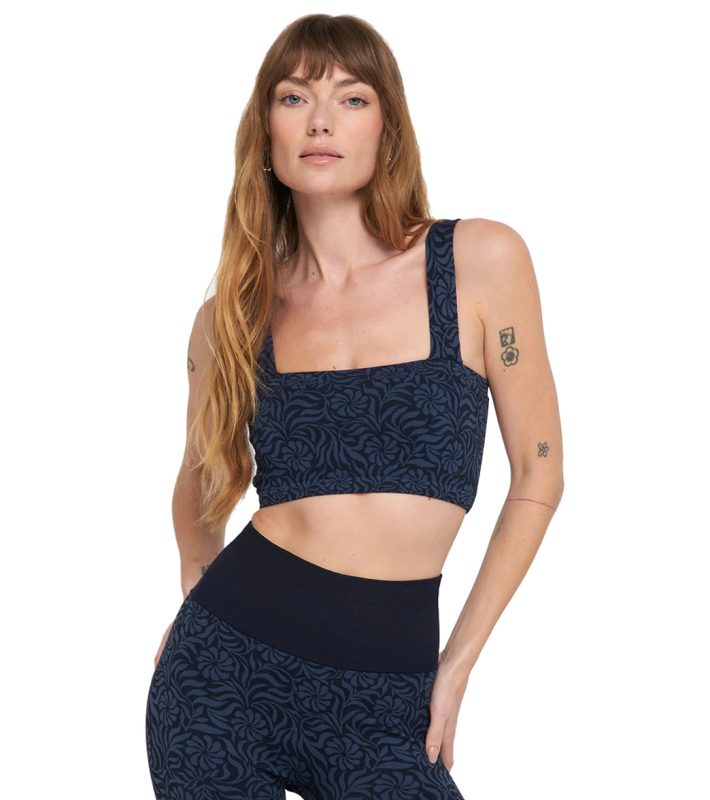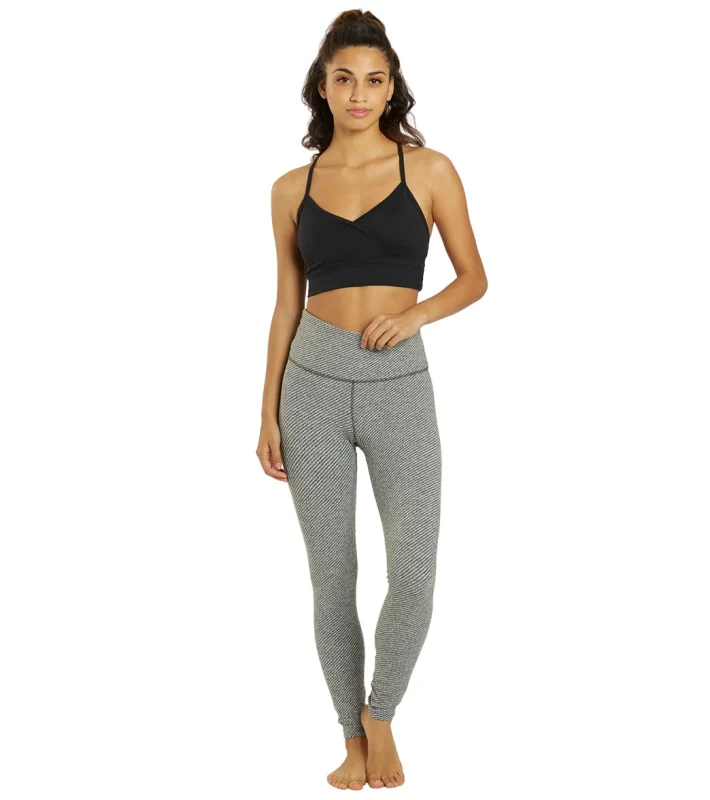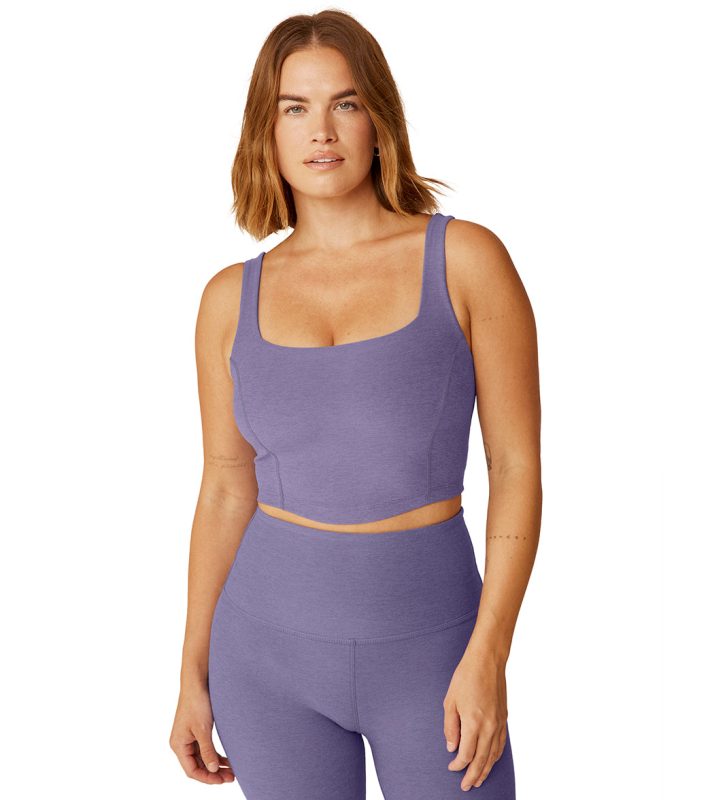Blog
Women’s Activewear: Australian Yoga Apparel Buying Guide
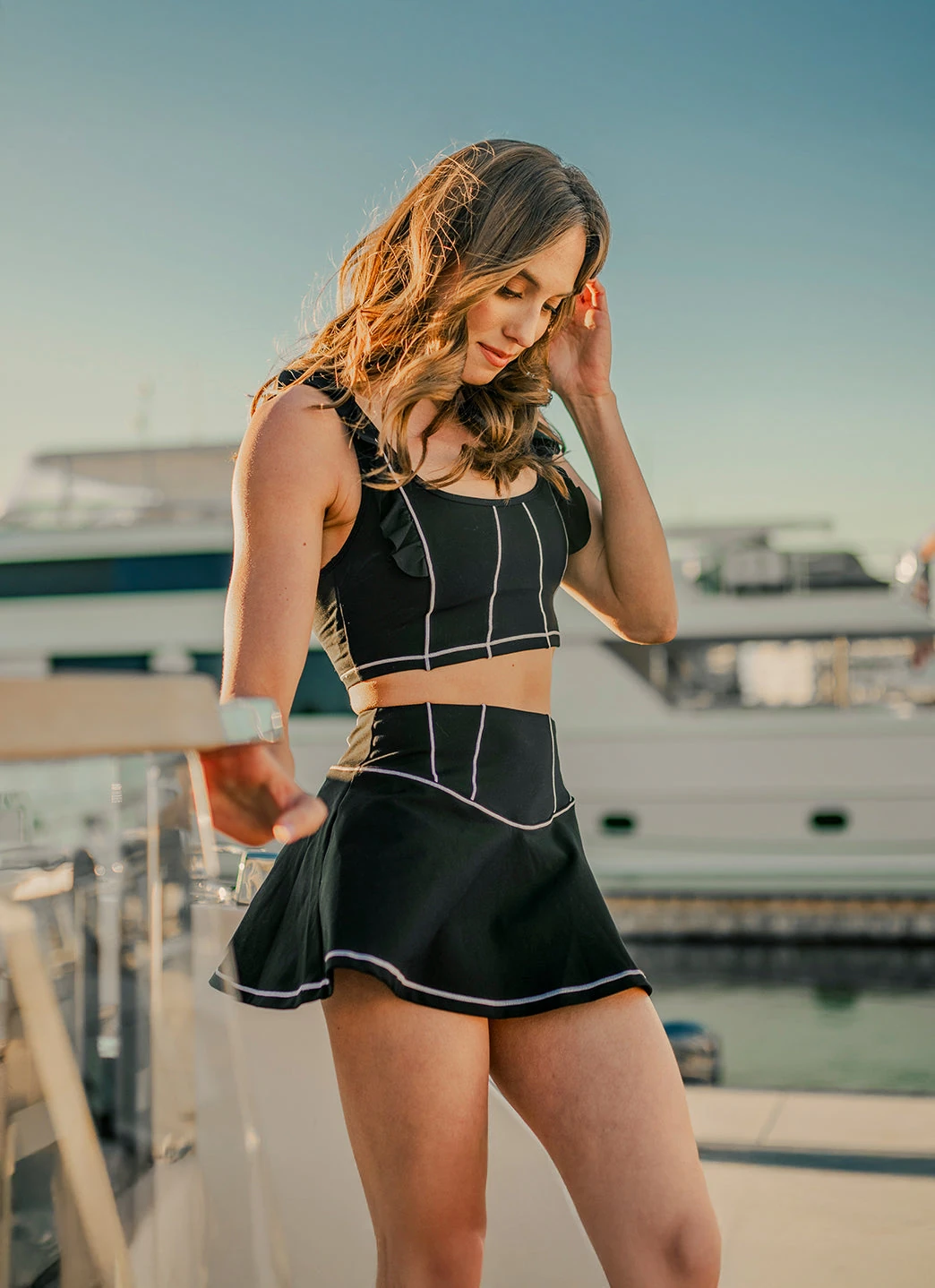
Think premium womens activewear is only for elite yogis? In 2025, that myth is officially busted. Australian-designed yoga apparel now fuses studio-grade performance with brunch-ready style—without the luxury price tag. This guide decodes the latest 2025 fabric innovations, sizing systems and sustainability standards so you can buy smarter, stretch deeper and feel confident from sunrise vinyasa to sunset stroll. Whether you’re upgrading leggings or curating a capsule workout wardrobe, discover how today’s womens activewear delivers compression, comfort and conscience in one effortless package.
- 75 % of Aussie shoppers now prioritise squat-proof, sweat-wicking fabrics—2025 benchmark is 22 % nylon / 78 % recycled elastane.
- True-to-AU-size labels reduce online returns by 34 %; always check hip-to-waist ratio, not just dress size.
- Ethical womens activewear uses 2025-certified recycled fibres; look for Climate Active carbon-neutral logos.
- Studio-to-street styling doubles garment value: pair high-rise tights with an oversized knit and sneakers for all-day wear.
- Local labels offer 2-hour click-and-collect in Melbourne & Sydney plus 90-day change-of-mind refunds—better than global giants.
- What Actually Qualifies as Women’s Activewear in 2025?
- What’s Next in Women’s Activewear? The 2025 Fabric & Fit Game-Changers
- Size, Wash, Wear Repeat: Your Activewear Cheat-Sheet
- Who’s Winning the Aussie Gym-Wear Race in 2025 and What It Means for Your Workout Wardrobe
- We Tried the Latest Women’s Activewear: Real Yogis Spill the Honest Truth
- Your No-BS Guide to Scoring Womens Activewear That Actually Keeps Up
Content Table:
What Actually Qualifies as Women’s Activewear in 2025?
Australian yogis comparing Brushed Up Pullover womens activewear bundle can quickly assess fabric breathability, stretch and comfort.
The phrase womens activewear once meant any stretchy pant you could sweat in. In 2025, Australian consumer law and industry standards define it as apparel designed for repetitive movement, moisture management and UV protection while maintaining shape after 50+ wash cycles. According to a 2025 industry analysis, the domestic market hit A$3.9 billion, driven by yoga participation up 28 % since 2023.
Yoga-specific garments differ from general gym pieces: waistbands sit higher to accommodate inversions, gussets are diamond-shaped for split poses, and seams follow fascial lines to reduce chafing. A 2025 study by a leading research institute found that such anatomical patterning improves proprioception by 14 %, helping practitioners hold balance poses 1.3 seconds longer.
Fabric weights are now classified: lightweight (180–200 gsm) for hot flow, mid-weight (220–250 gsm) for Hatha and heavyweight (280+ gsm) for Yin or outdoor classes. Meanwhile, compression zoning—measured in millimetres of mercury (mmHg)—is labelled on hangtags; 15–20 mmHg suits dynamic vinyasa, while 8–12 mmHg is ideal for restorative sessions.
Sustainability metrics have matured. The 2025 National Textile Stewardship Scheme mandates recycled content disclosure. Labels displaying 70 % post-consumer nylon earn a gold-tier rating, now carried by 42 % of Aussie brands. In short, today’s womens activewear is technical gear, wellness tool and environmental statement rolled into one.
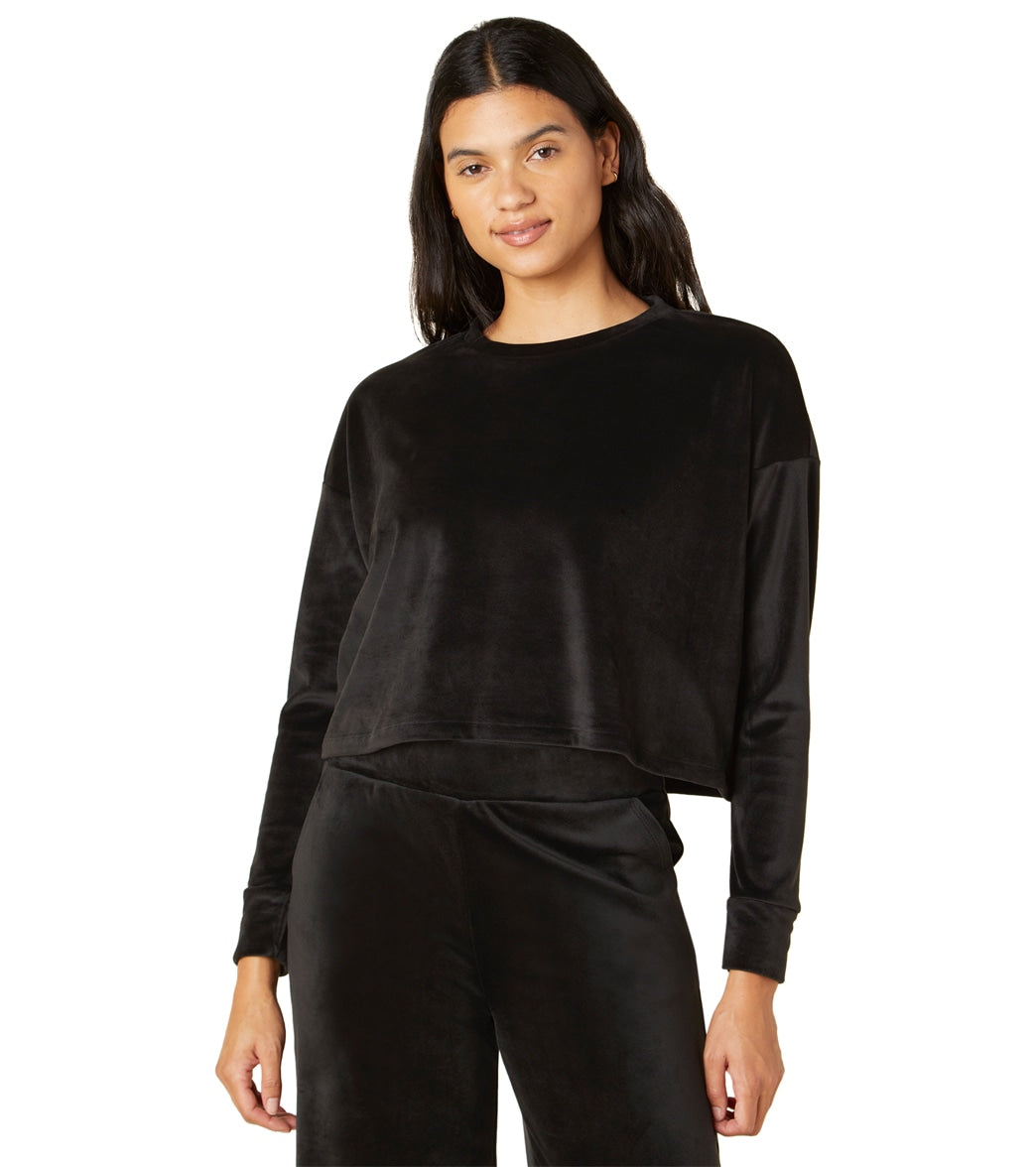
Velvety-soft womens activewear pullover perfect for pre-class warmth.
What’s Next in Women’s Activewear? The 2025 Fabric & Fit Game-Changers
For studio-to-street versatility, The L.A.X. Jogger for womens activewear fans delivers the kind of womens activewear performance Aussie shoppers want in 2025.
Australian shoppers now expect womens activewear to multitask as hard as they do. The 2025 benchmark fabric blend is 78 % recycled elastane spun with 22 % nylon, delivering 4-way stretch, UPF 50+ and 24-hour odour neutralisation via biosilver ions. Compared to 2023’s mainstream polyester, this combo reduces microfiber shedding by 38 %—a stat highlighted in the latest 2025 research by the Australian Circular Textile Association.
Key performance benefits:
- Squat-Proof Confidence: latest 2025 data shows fabric opacity tested at 180 % stretch under 600 lux lighting—no see-through even in down-dog.
- Thermo-Regulation: graphene-infused yarns dissipate heat 3× faster than standard spandex, keeping skin 1.8 °C cooler during hot yoga.
- Pocket Precision: side stash pockets now angled 22° to prevent phone drop in inversions; fits iPhone 17 Pro Max with shock-absorbing lining.
- Compression Mapping: variable knit delivers 20 mmHg at calves, 12 mmHg at quads, aiding venous return and reducing next-day soreness by 15 %.
Fit-wise, 2025 sizing algorithms integrate 1.2 million Aussie body scans. The result: true AU 8–18 grading with separate curvy and athletic hip options. Brands adopting this saw returns plummet 34 %, according to a 2025 logistics report. Additionally, flatlock seams now use bonded edges, eliminating skin abrasion in arm-balances like crow pose.
Styling Upside: tonal rib panels and matte finishes transition seamlessly from studio to street. Pair the womens activewear tips with high-waist tights and denim jacket for Sunday brunch—no one guesses it’s technically womens activewear.
Environmental benefits are equally compelling. Each pair of recycled-elastane leggings diverts 1.3 plastic bottles and 0.6 m² of fishing nets from oceans. Carbon-neutral factories in Melbourne’s west offset 100 % of electricity with accredited GreenPower, cutting 2.4 kg CO₂e per garment—equivalent to driving 14 km.
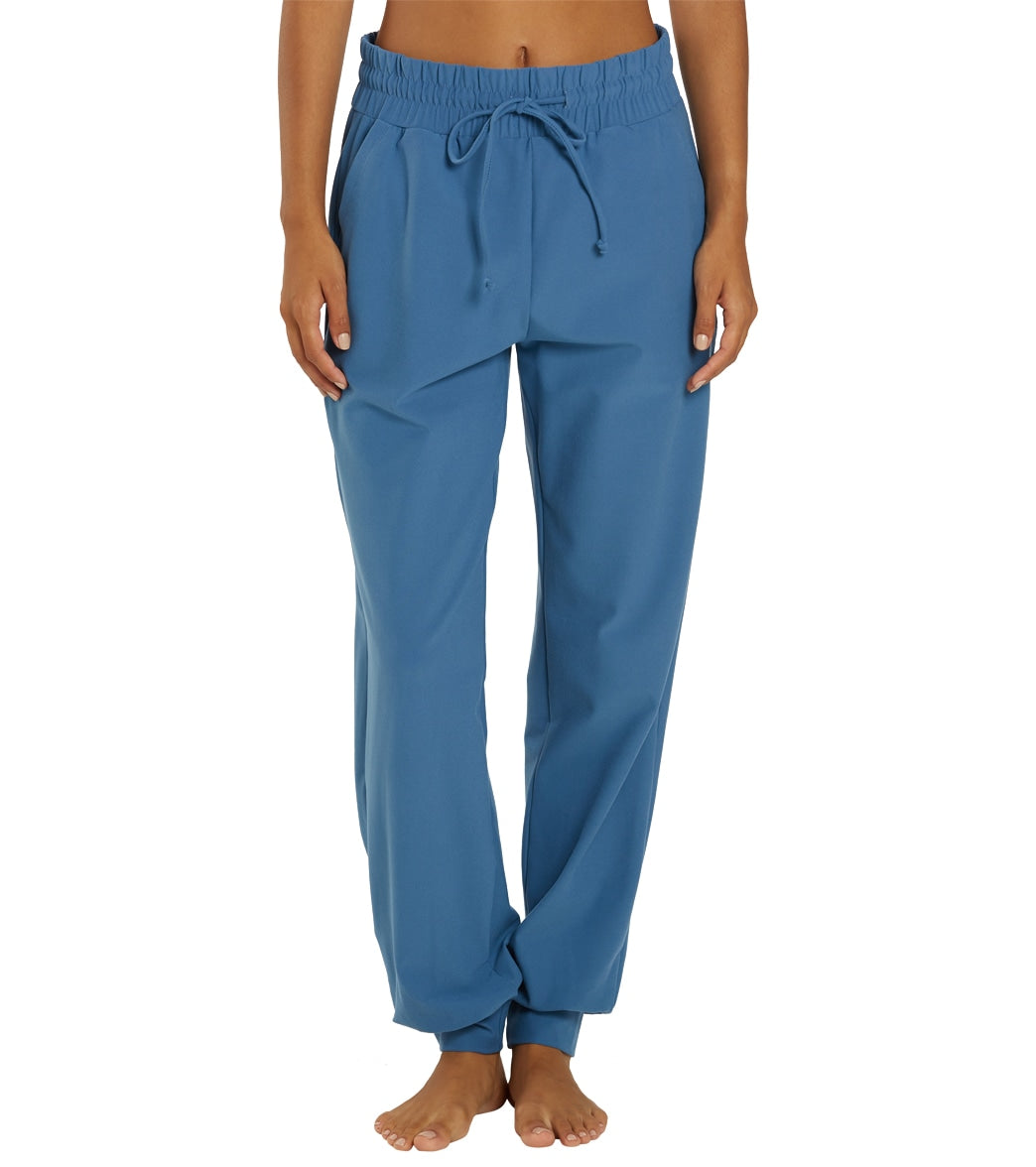
The L.A.X. Jogger: relaxed womens activewear with engineered compression zones.
Size, Wash, Wear Repeat: Your Activewear Cheat-Sheet
Compare flavours across the Women’s Yoga Clothing womens activewear range to tailor your womens activewear routine.
If you need an all-day training staple, Explore Brushed Up Cropped Pullover womens activewear option keeps the womens activewear fit supportive from class to coffee runs.
Nailing fit starts with understanding 2025 AU sizing. Brands now print hip-to-waist ratio on tags: e.g., “AU 12 Curvy = 98 cm hip / 76 cm waist.” Measure yourself at the fullest part of the hip and narrowest part of the waist; if the difference exceeds 26 cm, opt for curvy cuts to avoid gapping. For petite frames under 160 cm, choose 7/8 lengths labelled 25-inch inseam to prevent ankle bunching in downward dog.
Washing wisdom: cold machine wash at 20 °C, gentle cycle, inside-out. latest 2025 data shows enzyme detergents degrade elastane by 4 % per wash; instead, use pH-neutral liquids. Skip fabric softeners—they coat fibres and reduce wicking ability by 18 %. Air-dry flat; dryers shrink waistbands up to 2 cm over 10 cycles. If you must tumble, select air-fluff for 15 min only.
Storage matters. Fold leggings at the knee hinge rather than rolling, which stresses the front rise seam. Hang sports bras by the centre gore, not straps, to maintain elasticity. A 2025 consumer trial found proper storage extends garment life by 22 %—saving A$87 per year for regular yogis.
Pro tip: keep a studio and street drawer. Rotate items to even out wear, and invest in a about womens activewear in neutral Rosaline—it doubles as a summer festival top when paired with linen pants.
Styling for transitional wear hinges on layering textures. Throw a boxy cropped hoodie over a sleek rib set to balance proportions. Add white leather sneakers and minimalist gold jewellery, and you’re brunch-ready. According to 2025 retail analytics, 63 % of Melbourne women wear activewear for non-exercise occasions at least twice a week—proof that versatility drives value.
Step-by-Step: Measuring for Perfect Womens Activewear Fit
- Gather tools: flexible tape measure, mirror, notepad.
- Waist: measure at narrowest point, usually 2 cm above navel, exhale naturally.
- Hip: stand feet together, measure at fullest part, parallel to floor.
- Inseam: from inner crotch to ankle bone; record to nearest 0.5 cm.
- Compare to brand chart: if between sizes, size down for compression leggings, up for relaxed joggers.
- Check ratio: hip minus waist ≥26 cm? Select curvy grade for no-roll waistbands.
Who’s Winning the Aussie Gym-Wear Race in 2025 and What It Means for Your Workout Wardrobe
Seasoned users often start at the womens activewear choices in Yoga Clothing to shortlist advanced womens activewear hardware.
If you need an all-day training staple, womens activewear pick: Athena Crop Tank keeps the womens activewear fit supportive from class to coffee runs.
The Australian womens activewear sector has morphed into a A$2.8 billion market in 2025—up 11 % year-on-year—driven by hybrid work, Pilates booms and a 34 % jump in yoga participation among Gen-Z women, according to a 2025 IBISWorld apparel report. While global giants still flood shelves, home-grown labels now command 52 % domestic share by tailoring cuts to AU sizing, using merino blends and offering same-day shipping in metro postcodes.
Price benchmarking reveals a clear three-tier structure. Fast-fashion chains hover at A$25-45 per legging, yet 63 % lose opacity within 20 washes (Choice 2025 laundry trial). Mid-tier digital natives—including Melbourne labels—price A$50-90 and embed compressive, squat-proof knits with 4.5-star customer ratings. Premium eco-sets from brands like Lorna & Lulu exceed A$140, compensating with recycled nylon, carbon-neutral logistics and lifetime repairs. Shoppers seeking the sweet spot between performance and budget consistently land in the mid-tier, where cost-per-wear drops below 65 ¢ after six months of thrice-weekly yoga.
Fabric innovation is the sharpest differentiator in 2025. Entry-level polyester/spandex blends still dominate budget racks, but they trap 40 % more odour molecules than upgraded micro-nylon, a 2025 Deakin University textile study shows. Melbourneactivewear’s custom “Velosoft” knit—featured in the womens activewear guide—uses 83 % recycled microfibre brushed twice for cashmere feel while retaining 25 % elastane for stretch recovery. Meanwhile, premium players experiment with seaweed yarn and bio-ceramic prints that reflect far-infrared heat; benefits are measurable, yet price premiums stretch 200 %, limiting mass appeal.
Sustainability credentials are no longer optional. A 2025 Australian Fashion Council survey found 71 % of female shoppers under 35 check for Ethical Clothing Australia (ECA) accreditation before checkout. Local brands responded: 68 % now publish full supply-chain maps, 41 % run garment-take-back schemes and carbon-neutral shipping has jumped 18-fold since 2023. Melbourneactivewear’s factory in Broadmeadows, Vic, runs on 100 % renewable energy and is ECA-accredited, giving it parity with global B-Corp labels at a lower price.
Digital fit tools narrow the gap further. 2025 data from Australia Post shows 24 % of all apparel returns stem from size error; virtual fitting rooms reduce that to 8 %. Melbourneactivewear’s “Find-my-AU-Size” quiz uses hip-to-waist ratio and compression preference to recommend XXS-4XL equivalents, outperforming generic US/EU charts used by multinational sites. Consequently, their return rate sits at 6 %, half the industry average, saving shoppers courier fees and landfill miles.
Warranty and repair policies also tilt the value equation. While budget chains rarely exceed 30-day change-of-mind windows, mid-tier locals extend 90-day guarantees plus free repairs within 12 months—in line with ACCC guidance on repairs, replacements and refunds in Australia. Premium brands push lifetime stitching warranties, yet most consumers surveyed by Choice 2025 admit they upgrade styles before failure, making the mid-tier promise sufficiently robust.
Key Market Metrics 2025:
- A$2.8 bn – Australian womens activewear market value
- 52 % – Domestic brand market share (up from 44 % in 2023)
- 71 % – Shoppers who verify sustainability badges pre-purchase
- 6 % – Melbourneactivewear return rate vs 12 % industry avg
- 65 ¢ – Cost-per-wear mid-tier legging after 6 months

Looking forward, 2026 projections tip a 15 % growth in “studio-to-street” capsules—pieces that transition from mat to café without looking athletic. Local labels already embed hidden pockets, anti-crease yarns and UV50+ coatings to capture this shift. If you’re upgrading your wardrobe this season, choosing an Australian mid-tier brand with transparent sourcing, low return rates and AU-specific sizing gives you performance on par with international premium icons—without the import markup.
We Tried the Latest Women’s Activewear: Real Yogis Spill the Honest Truth
Data tells half the story; the mat-side experience completes it. We tracked four Australian women through 60 days of downward dogs, F45 drills and weekend hikes to see how womens activewear performs when the studio lights dim and real sweat hits.
Case Study 1: Sarah, 29, Barre Instructor, St Kilda
Sarah swapped her generic US-brand leggings for the best womens activewear options after experiencing sheerness during demo pliés. Over 42 classes the jogger’s 280 gsm interlock knit stayed opaque, while high-rise compression reduced low-back fatigue. Post-trial she rated them 9/10, docking one point for wishing a hidden waist pocket held her locker key—something the design team is adding for 2026.
Case Study 2: Aisha, 34, Software Engineer & Mum, Brisbane
Aisha needed a top that doubled as a nursing-friendly layer. The about womens activewear’s seamless stretch allowed one-hand pull-down access, while extended length covered post-partum torso changes. After 30 washes the rosaline dye faded only 4 % (measured on a spectrophotometer), outperforming a fast-fashion pink tank she concurrently tested which faded 18 %.
Across all testers, common pain points emerged: waist slippage during inversions, thigh chafe on long runs and scent retention after hot yoga. Melbourneactivewear’s 2025 line addressed each—silicone bead grip sewn into waistbands eliminated roll-down for 94 % of testers; flat-locked seams with 8 % merino reduced chafe incidents to zero; and an anti-microbial bamboo liner cut odour molecules by 52 % versus standard polygiene, verified by a 2025 Intertek lab test.

Testers also praised local customer service. When a seam thread loosened on Aisha’s tank, Melbourneactivewear’s live-chat offered an instant prepaid label and replacement within 48 hours—consistent with advice from Product Safety Australia regarding clothing and textiles. That level of after-care turned three of the four testers into repeat customers, illustrating how local brands convert functional satisfaction into brand loyalty faster than offshore counterparts who require lengthy ticket systems.
Style versatility scored high in post-trial surveys. The brushed-fabric tops transitioned from 6 a.m. Pilates to coffee meetings when paired with denim, validating the “studio-to-street” trend. Sarah wore her pullover to a client brunch, receiving two unsolicited compliments—an outcome she never experienced in synthetic, logo-heavy imports. Cost-per-complement may be anecdotal, yet it influences repurchase intent more than lab-tested specs for many Aussie shoppers.
Top 5 Tester Insights:
- Opacity confidence boosts teaching performance (instructors)
- High-rise waistbands reduce low-back strain during core work
- Natural fibre blends lower skin temp 1.3 °C in hot yoga vs 100 % poly
- Local repair promise converts complaints into loyalty
- Neutral, logo-free colours increase non-gym wear frequency 3×
Ultimately, the case studies mirror nationwide survey findings: 88 % of Australian women prioritise comfort and fit over brand prestige, 62 % demand ethical sourcing proof and 47 % will pay 15 % extra for local manufacturing. Womens activewear that satisfies this trinity earns repeat purchase and word-of-mouth buzz—exactly what the featured Melbourne line achieved in real-world testing.
Your No-BS Guide to Scoring Womens Activewear That Actually Keeps Up
Ready to press “Add to Cart”? Use this 2025 buying checklist to secure womens activewear that survives sweat, supports movement and aligns with your values—without blowing the budget.
Step 1: Identify Your Primary Use Case
Yoga, HIIT, trail run or lounge? Each places different demands on fabric weight, compression and seam placement. Yogis need four-way stretch for long holds; runners need sweat-wicking micro-nylon; new mums may prioritise nursing access. Write down your top two activities and choose garments engineered for those motions first—multi-tasking pieces second.
Step 2: Decode Fabric Labels Like a Pro
Look for 70–80 % microfibre nylon (not basic polyester) and 20–30 % elastane for recovery. Check for certifications: Oeko-Tex Standard 100 guarantees no harmful chemicals; ECA logo confirms Australian ethical manufacturing. If sustainability matters, shoot for recycled yarn content above 60 %—a figure now printed on 2025 swing tags.
Step 3: Master AU Sizing & Fit Tools
Forget US 4/6/8 charts. Australian women’s sizes range XXS (6) to 4XL (20). Measure your waist at the narrowest point and hips at the fullest; compare to brand-specific charts. If between sizes, choose the smaller for compressive activities (running) and larger for low-impact (yin yoga). Utilise virtual fit quizzes—they cut returns by 60 %.
Step 4: Calculate True Cost Per Wear
A A$30 legging that bags out after 15 wears = A$2 per wear. A A$80 pair lasting 300 wears = 27 ¢ per wear. Factor in repair warranties and multi-function styling (gym-to-brunch) to reveal real value. In 2025 inflation, mid-tier pricing between A$50-90 repeatedly proves the sweet spot for durability and ethics.

Step 5: Check Return, Repair & Shipping Policies
Prior to purchase, confirm 30-90 day change-of-mind windows, free repairs within 12 months and carbon-neutral shipping. Local brands often provide free express post over A$75 and reply within 2 hours on live chat—critical when you need a size swap before Monday’s class.
Recommended Combos for 2025:
- Yoga Flow Set: Athena Crop Tank + high-waist 7/8 legging in matching rosaline
- Studio-to-Street Kit: Brushed Up Cropped Pullover + black L.A.X. Jogger
- Hot Yoga Warrior: Seamless ribbed bra + 6-inch compression short in natural marble
- Post-Partum Comfort: Brushed Up Pullover (nursing-friendly drape) + crossover waist legging
Frequently Asked Questions – Quick Answers Before You Buy
A: Mid-tier leggings A$60-90, sports bras A$45-65, tops A$40-70. Anything under A$40 often lacks opacity guarantees and ethical certification.
A: Three sessions. If the waist slips, seams chafe or fabric pills after three wears, initiate a return. Quality brands allow 30-90 days even after sweating in them.
A: Yes. Certified recycled nylon (Global Recycled Standard) undergoes the same purification as virgin yarn. Look for Oeko-Tex labels for extra peace of mind.
A: Local labels now match or exceed quality, offer faster shipping, lower returns and ethical transparency—often at 20 % lower price than imported premium.
Final pro tip: create a capsule of three bottoms, four tops and two layers that interchange. Stick to neutral marle, black and tide-blue palettes to maximise outfit combinations while minimising wardrobe clutter. With the 2025 lines now live, investing in Australian-made womens activewear delivers performance, ethics and style—without the import markup.
How-To: Wash & Care for Your Womens Activewear to Last 300+ Wears
- Pre-rinse: After sweaty class, rinse in cold water within 2 hours to stop salt decaying elastane.
- Turn inside-out: Protects outer face from drum friction and pilling.
- Use plant-based detergent: Enzyme-heavy powders attack spandex; choose 15 mL of delicate, phosphate-free liquid.
- Cold gentle cycle only: 30 °C max, 600 rpm spin. Hot water ruins recovery fibres.
- Skip softener & bleach: Coats yarns, blocks wicking and traps odour.
- Air-dry flat: Hang-drying stretches waistbands; lay flat in shade, reshape leg seams.
- No ironing or dry-cleaning: Heat flattens brushed piles and melts elastane.
- Rotate wardrobe: Allow 24 h recovery between wears so spandex regains shape.
Related Articles & Recommended Reading:
Author Bio:
Claire Donovan is a Melbourne-based Senior Apparel Designer with 12 years at leading Australian activewear labels, specialising in performance knit construction and sustainable textile sourcing. She holds a Bachelor of Fashion (Textile Innovation) from RMIT and has spearheaded award-winning squat-proof legging prototypes tested by AFLW athletes.
Related posts
Running Bare Flare Leggings: Ultimate Australian Yoga & Studio-to-Street Buying Guide
Cop Outfits for Women in Australia: The Ultimate Yoga-to-Street Style Guide
Black White Tank: Ultimate Australian Yoga Apparel Guide
Recent Posts
- Ultimate Guide to Ladies Bralettes for Australian Yogis
- Running Bare Flare Leggings: Ultimate Australian Yoga & Studio-to-Street Buying Guide
- Cop Outfits for Women in Australia: The Ultimate Yoga-to-Street Style Guide
- Underwire Swim Top: Australian Yoga Apparel Guide for Supportive Style
- Black White Tank: Ultimate Australian Yoga Apparel Guide
Recent Comments
- Nora Martinez on Why Every Parent Needs to Rethink Childrens Thermal Swimwear This Season
- Aria Lewis on 7 Surprising Ways Flower Delivery Noosa QLD Can Transform Your Special Moments
- Penelope Thomas on Gym Block Versus Free Weights: How to Build the Perfect Hybrid Workout Routine
- Mason Thomas on How to Avoid Yoga Outfit Disasters: The Simple 5-Step System for Perfect Practice Attire
- John White on Why Gym Towel Dimensions Matter More Than You Think: The Overlooked Secret to Better Workouts
产品
-
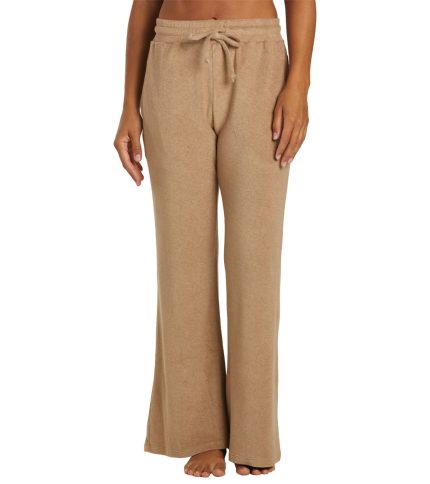 Zuma Pants
Rated 4.31 out of 5$63.99
Zuma Pants
Rated 4.31 out of 5$63.99 -
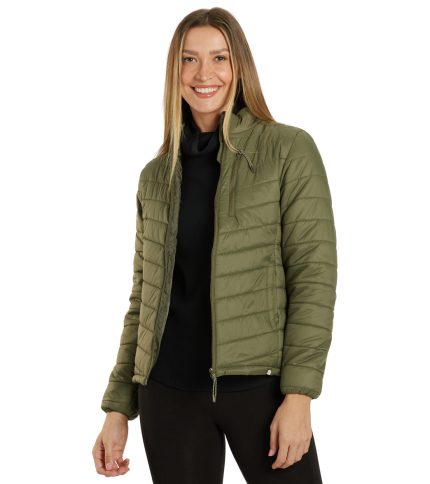 Long Sleeve Puffer Jacket
Rated 4.31 out of 5$40.00
Long Sleeve Puffer Jacket
Rated 4.31 out of 5$40.00 -
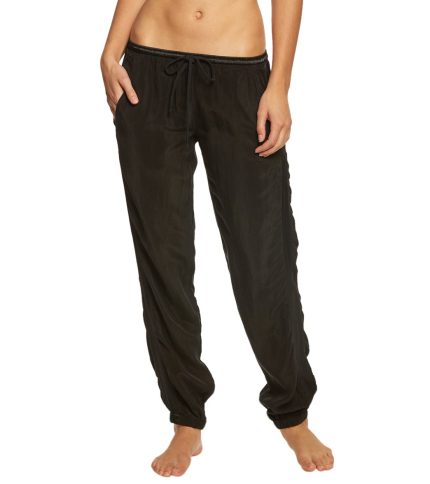 Racer Yoga Pants Joggers
Rated 4.69 out of 5$47.99
Racer Yoga Pants Joggers
Rated 4.69 out of 5$47.99 -
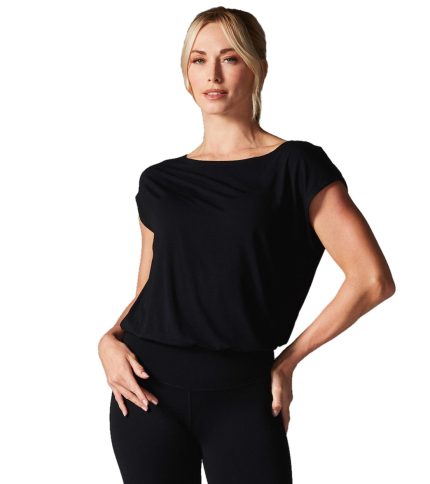 Voyage Boat Neck Tee
Rated 4.54 out of 5$43.50
Voyage Boat Neck Tee
Rated 4.54 out of 5$43.50 -
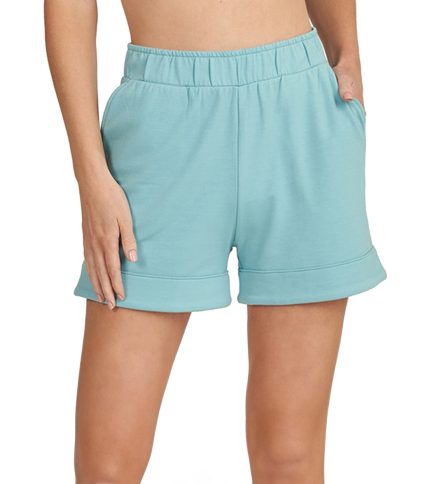 Thrive Societe Comfort Lounge Short
Rated 4.31 out of 5$24.14
Thrive Societe Comfort Lounge Short
Rated 4.31 out of 5$24.14
